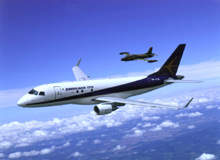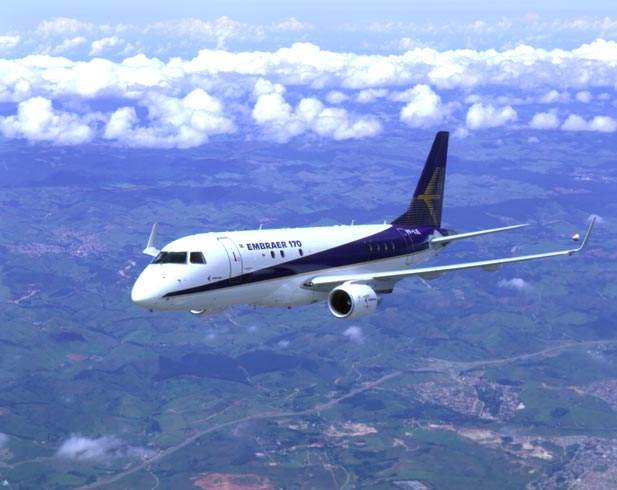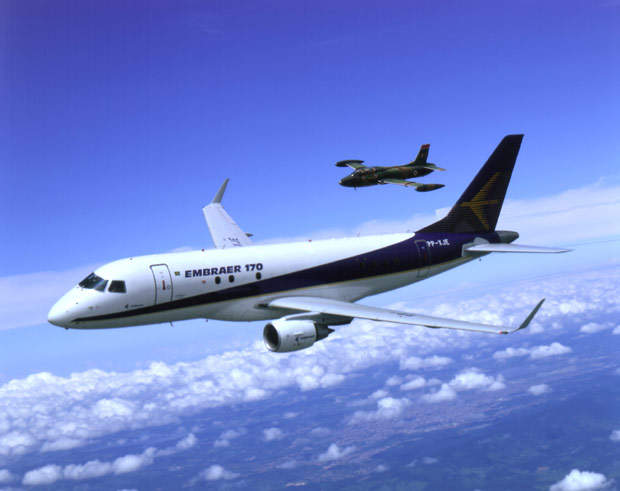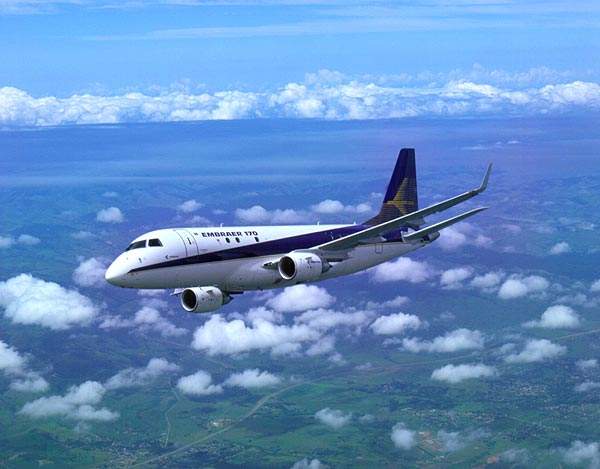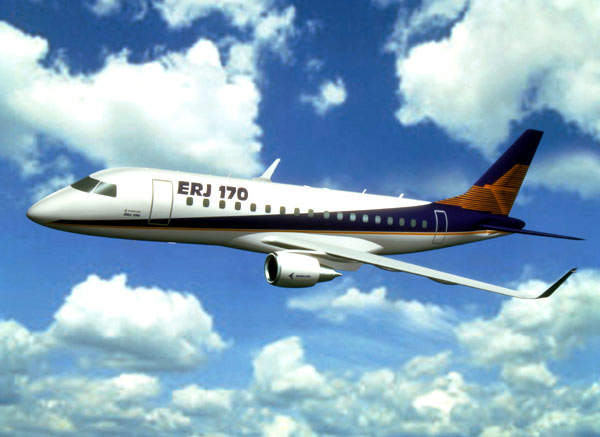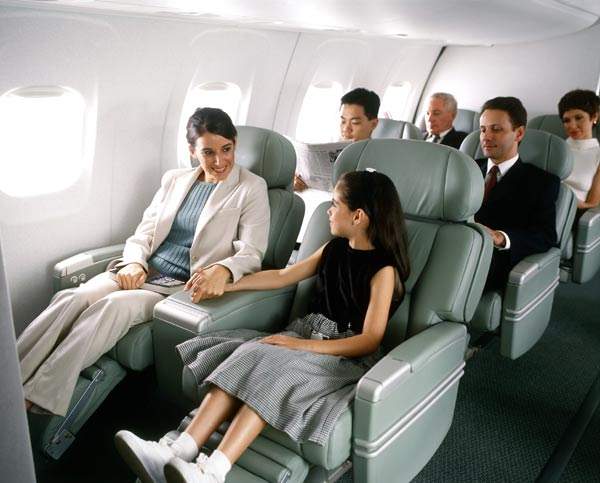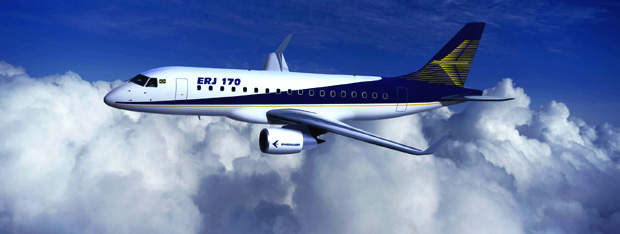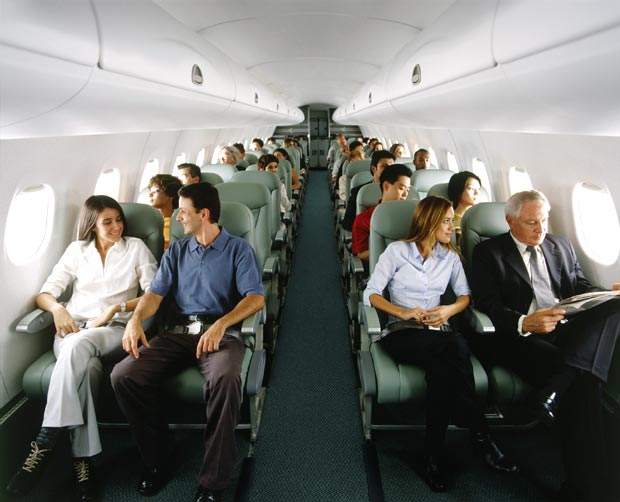The Embraer 170 aircraft is the first member of a new family of commercial jets developed by Embraer. As well as the 70-passenger 170, the family includes the 78-passenger Embraer 175, the 98-passenger Embraer 190 and the 108-passenger Embraer 195.
The Embraer 170 was launched in June 1999 and took its maiden flight in February 2002. The fifth of six flight test aircraft took its first flight in July 2002. The flight tests were carried out from Embraer’s main site in Sao Jose dos Campos and from the Gaviao Peixoto industrial centre where Embraer constructed a 5,000m-long, 95m-wide runway, which is the longest runway in Latin America.
The aircraft gained Brazilian, US and European certification in February 2004 and the first aircraft was delivered to Alitalia in March 2004. The aircraft entered service with LOT airlines of Poland in March 2004. The first flight of the 175 took place in June 2003 and the aircraft entered service with Air Canada in July 2005. Federal Aviation Administration (FAA) certification was received in September 2006.
By June 2009, 885 firm orders were secured by Embraer for the entire 170/190 family of commercial jets. These were ordered by 53 customers in 35 countries worldwide.
Firm orders for individual aircraft include 193 for the Embraer 170 (ordered with 91 options), 135 for the Embraer 175 (ordered with 173 options), 443 for the Embraer 190 (ordered with 454 options) and 111 for the Embraer 195 (ordered 76 options).
Customers for the Embraer 170 include Alitalia of Italy (launch customer, six), British Airways City Flyer (six), Swiss (15), GE Capital Aviation Services (GECAS) (20), US Airways (28), LOT Airlines (ten), PB Air of Bangkok (three), Air Caraibes of Guadeloupe (two), Republic Airways Holdings (39 plus 61 options), Finnair (12 plus eight options), TAME of Ecuador (two), Saudi Arabian Airlines (15), Egyptair (six plus six options), Virgin Blue (six), Air France Regional (six) and Virgin Nigeria (eight). 193 Embraer 170 have been ordered and 160 delivered.
Orders were received for 135 Embraer 175, including Jet Airways of India (ten), Air Canada (15 plus 15 options), LOT Airlines (four), Republic Airlines (30) and Northwest Airlines (36). 120 Embraer 175 were delivered.
In September 2009 British Airways received its first Embraer 170 jetliner during a ceremony held at the Brazilian airframer’s Sao Jose dos Campos site. British Airways will acquire six Embrear 170s and five Embraer 190s with an option to purchase an additional three 190s.
Gulf Air leased two Embraer 170 jetliners in January 2010. The lease was initially signed for three years with an option to extend it by five more years. Gulf Air will deploy the jet as part of its plan to realign and expand its regional and international network.
Embraer 170 programme
The 170/190 regional jet family is developed through a partnership program with major aerospace contractors, involving 16 risk-sharing partners and 22 main suppliers.
Embraer is responsible for the design and development of the aircraft, manufacture of the forward fuselage, fuselage centre section II, wing-to-fuselage fairings, wing assembly and whole aircraft integration. Other companies responsible for structural sections of the aircraft include Kawasaki Heavy Industries from Japan, Sonaca of Belgium, Latécoère of France and Gamesa of Spain.
The US-based C&D Aerospace is supplying the passenger cabin and cargo compartment interiors of the aircraft.
The main system partners include General Electric (engines and nacelles), Hamilton Sundstrand (tail cone, auxiliary power unit, air management and electrical systems), Honeywell (avionics), Parker of the USA (hydraulics, flight control, fuel system) and Liebherr of Germany (landing gear).
These companies created subsidiaries in Brazil for the local manufacture of parts.
Assembly of the Embraer 170 is carried out in a dedicated newly constructed 16,000m² facility, which has the capacity for eight aircraft under construction. A 4,000m² painting hangar was installed.
Embraer 170 design
Design tools employed included digital modelling and virtual reality, and over 2,000 hours of wind tunnel tests. The aircraft is of low wing design with podded engines mounted below the wings. The wings of the Embraer 170 are fitted with winglets, which reduces the drag of the tip vortex and provide increased lift and improved efficiency of the wing.
The aircraft features a ‘double-bubble’ fuselage, which provides more volume in the passenger cabin, with more room at passenger’s feet and shoulder levels and easier access to the overhead baggage bins.
Embraer 170 flight deck
The aircraft has an all-digital cockpit. The lightweight modular-architecture avionics suite includes a Honeywell Primus Epic Electronic Flight and Information System (EFIS) with five liquid crystal colour displays.
The flight controls are fly-by-wire technology (computer-controlled, electrical primary flight controls) with the exception of the ailerons.
Embraer 170 cabin
The interior cabin is designed by C&D Interiors and seats 70 passengers in a four-abreast configuration with an 81cm (32in) seat pitch.
Embraer 170 engines
The Embraer 170 is fitted with two underwing-mounted engines, type CF34-8E, rated at 62.28kN. The engines and engine nacelles are supplied by General Electric. The engines are controlled by a full authority digital engine control (FADEC), a fully redundant, computerised management system, which optimises the engine performance at each phase of the flight, resulting in reduced fuel consumption and maintenance costs.
The aircraft carries 9,470kg of fuel and is fitted with a Parker Hannifin fuel system. The ERJ-170 long-range variant is fitted with additional fuel tanks installed in the baggage compartment.
Embraer 170 performance
At long-range cruise speed and with full passenger seating, the Embraer 170 has a range of 3,889km. The aircraft is capable of operations between city pairs Dallas to Halifax, Paris to Moscow, Hong Kong to New Delhi, and Brasilia to Caracas.
The high-performance, high-efficiency engines are very quiet and the aircraft meets and exceeds the noise and emission-related requirements established by the International Civil Aviation Organisation (ICAO). The field performance enables the aircraft to operate efficiently at airports located in strategic places that present operational restrictions, such as London City Airport, Santos-Dumont and Florence Airports.
Forward and aft doors on both sides of the fuselage allow rapid boarding and deplaning with simultaneous servicing. The aircraft has ten-minute single-point refuelling and the under-wing engines can be serviced from the ground without stands.
Landing gear
Liebherr supplied the aircraft’s retractable tricycle-type landing gear. Each unit is fitted with twin wheels.

